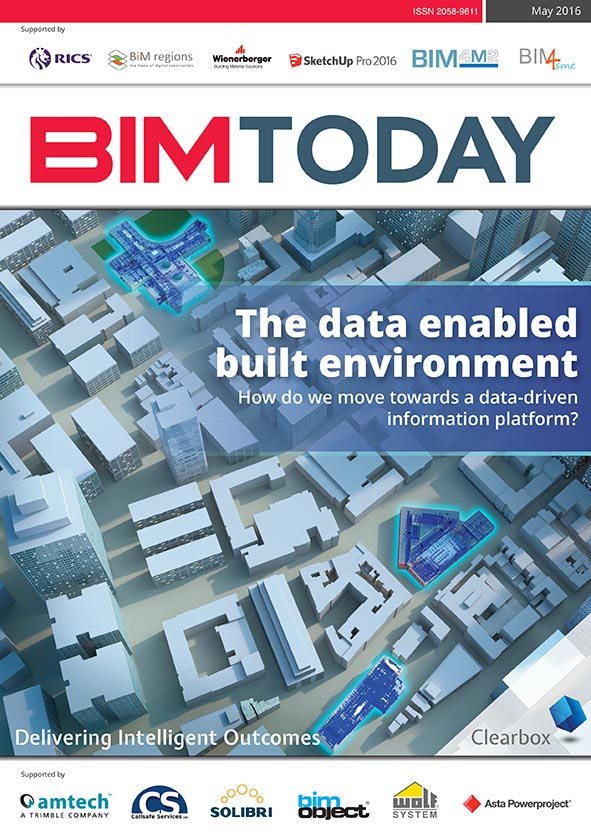Welcome to the May 2016 Edition of BIM Today
We are just over a month on from the government’s April deadline for BIM Level 2 to be implemented on centrally procured public sector projects. So how is this affecting industry?
To reflect our previous edition in February, where I looked at the latest batch of survey results, here, I’ll refer to the recent NBS National BIM Report and some of the findings. Again, the reading isn’t wholly positive with only 54% of respondents aware of and using BIM. Perhaps one of the biggest problems highlighted by the survey is that 21% think BIM is about software – this surely would suggest that communication of what BIM is still requires a push. It isn’t all bad news, however, as 86% of those who took part in the survey expect to be using BIM by this time next year, and 97% expect to be using it within five years. We will have to wait and see if those predictions come true – I suspect they won’t be quite that high, but we are slowly seeing greater adoption as more and more organisations realise the benefits that BIM will bring. If they don’t get on board with BIM, as John Eynon says in his article, they will likely face “financial oblivion.”
This edition of BIM Today carries many must-read articles, one of which is from Karen Alford, Flood Risk Manager, digital asset data and information at the Environment Agency (EA). Alford outlines the progress made by the EA from an employers perspective of utilising BIM, but she also highlights concerns for industry adoption. She mirrors one of the concerns from the NBS Report, commenting that, “I continue to be surprised at how ingrained the belief is that it’s about software, and if the acronym BIM is added into the contract its all sorted.”
Stephan Jones, Segment Manager of Trimble MEP, writes that now the BIM Level 2 Mandate has arrived, that “the construction community is rapidly being divided into the haves and have nots. The haves can be split into two subgroups, those that have made the grade through the enablement of their technology providers, and those that are now fighting spreadsheets and who are probably questioning the sanity of all that extra work.” He asks whether “those of us sitting comfortably on the bandwagon get off and understand their perspectives and challenges?”
Perhaps unsurprisingly, Jones is of the belief that we do help – after all, BIM is about collaboration too isn’t it? I would also like to direct readers to an article from Paul Oakley, Associate Director BIM at BRE who argues that the Holy Grail for BIM relies on a plain language dictionary for the delivery of structured information. He asks tough questions: Which object library standard do we use as none of them meet all our requirements? Which implementation of a standard should we use? He warns that “BIM object libraries can be expensive, are often miss-sold, and deliver nothing of use to the process.” However, he does state that industry is being pointed in the right direction.
Thank you to all contributors to this edition and if you would like to air your views too, please do get in touch.


